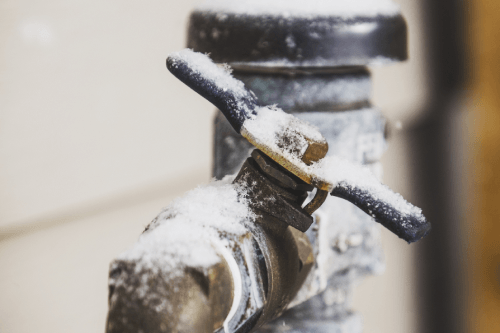This article down the page involving Preventing and dealing with frozen pipes is exceptionally remarkable. Give it a go and make your own conclusions.

Cold weather can wreak havoc on your pipes, especially by freezing pipes. Below's how to avoid it from happening and what to do if it does.
Intro
As temperatures drop, the threat of icy pipelines rises, possibly leading to expensive repairs and water damage. Understanding how to avoid icy pipelines is essential for property owners in chilly climates.
Prevention Tips
Protecting susceptible pipes
Cover pipelines in insulation sleeves or make use of warm tape to safeguard them from freezing temperature levels. Focus on pipelines in unheated or external areas of the home.
Heating strategies
Maintain indoor areas sufficiently heated, especially areas with pipes. Open up cabinet doors to permit cozy air to circulate around pipes under sinks.
How to recognize frozen pipes
Try to find decreased water circulation from faucets, uncommon odors or noises from pipelines, and visible frost on exposed pipelines.
Long-Term Solutions
Structural adjustments
Take into consideration rerouting pipelines far from exterior walls or unheated areas. Include added insulation to attics, cellars, and crawl spaces.
Updating insulation
Invest in high-grade insulation for pipelines, attics, and wall surfaces. Proper insulation assists preserve regular temperatures and lowers the danger of icy pipes.
Securing Exterior Plumbing
Garden hoses and outdoor taps
Separate and drain yard tubes before winter season. Mount frost-proof spigots or cover outdoor taps with shielded caps.
Understanding Icy Pipes
What causes pipelines to freeze?
Pipes ice up when exposed to temperatures listed below 32 ° F (0 ° C) for expanded periods. As water inside the pipes ices up, it expands, taxing the pipe wall surfaces and potentially creating them to break.
Threats and damages
Icy pipelines can cause water disturbances, home damage, and expensive repairs. Burst pipes can flood homes and cause extensive structural damages.
Indicators of Frozen Pipes
Recognizing icy pipelines early can prevent them from rupturing.
What to Do If Your Pipes Freeze
Immediate activities to take
If you believe frozen pipelines, keep taps open up to eliminate pressure as the ice thaws. Use a hairdryer or towels soaked in hot water to thaw pipelines slowly.
Final thought
Preventing frozen pipelines calls for proactive measures and fast reactions. By recognizing the reasons, signs, and safety nets, homeowners can shield their pipes throughout winter.
5 Ways to Prevent Frozen Pipes
Drain Outdoor Faucets and Disconnect Hoses
First, close the shut-off valve that controls the flow of water in the pipe to your outdoor faucet. Then, head outside to disconnect and drain your hose and open the outdoor faucet to allow the water to completely drain out of the line. Turn off the faucet when done. Finally, head back to the shut-off valve and drain the remaining water inside the pipe into a bucket or container. Additionally, if you have a home irrigation system, you should consider hiring an expert to clear the system of water each year.
Insulate Pipes
One of the best and most cost-effective methods for preventing frozen water pipes is to wrap your pipes with insulation. This is especially important for areas in your home that aren’t exposed to heat, such as an attic. We suggest using foam sleeves, which can typically be found at your local hardware store.
Keep Heat Running at 65
Your pipes are located inside your walls, and the temperature there is much colder than the rest of the house. To prevent your pipes from freezing, The Insurance Information Institute suggests that you keep your home heated to at least 65 degrees, even when traveling. You may want to invest in smart devices that can keep an eye on the temperature in your home while you’re away.
Leave Water Dripping
Moving water — even a small trickle — can prevent ice from forming inside your pipes. When freezing temps are imminent, start a drip of water from all faucets that serve exposed pipes. Leaving a few faucets running will also help relieve pressure inside the pipes and help prevent a rupture if the water inside freezes.
Open Cupboard Doors
Warm your kitchen and bathroom pipes by opening cupboards and vanities. You should also leave your interior doors ajar to help warm air circulate evenly throughout your home.
:strip_icc()/snow-outdoor-faucet-pipes-4af65d1e5e904fb1aa7bf74071fe5d89.jpg)
As an avid reader about Prevent Frozen Pipes , I think sharing that piece of content was a good idea. For those who liked our article if you please remember to share it. Kudos for your time. Don't forget to check our website back soon.
Click Here